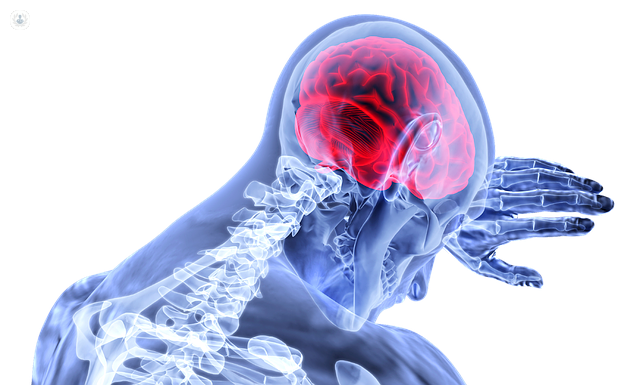


What is it?
Juvenile stroke is a stroke in a person aged under 45. A stroke is a condition in which there is insufficient blood flow to the brain. A stroke caused by an obstructed blood vessel is known as ischaemic stroke, whereas when the blood vessel ruptures it is known as a haemorrhage stroke.

What are the symptoms of a juvenile stroke?
Symptoms vary according to the area of the brain where the affected blood vessel is located. The most common symptoms include a sense of numbness in the limbs or face, visual disturbance, vertigo, headache, trouble speaking and breathing and even loss of consciousness. These symptoms can happen a few hours after the stroke or as far as a couple of days after.
How is it diagnosed?
A juvenile stroke can be diagnosed with the following tests:
- MRI scan of the brain;
- MR angiography of the brain;
- CT scan
- transcranial doppler sonography
From a neurological perspective, the consequences of a stroke can be measured by the NIHSS Stroke Scale or by the modified Rankin scale. These evaluate the damage caused by the stroke.
What causes it?
Juvenile stroke can be caused by some specific embolic cardiopathies, such as patent foramen ovale (PFO), or by arterial conditions, such as coronary heart disease. Another major risk factor is the use of illegal drugs including cocaine.
How can it be prevented?
It is important to avoid taking illegal drugs or smoking as these are the two main risk factors for a juvenile stroke. You should keep your cholesterol levels under control by avoiding foods high in saturated fats.
If you already have a diagnosed cardiovascular condition such as hypertension, the doctor may recommend blood-thinning medication to reduce your chances of stroke in the future.
How can it be treated?
If you think you’ve suffered from a stroke, call 999.
In case of an ischaemic stroke, you will be given a thrombolytic agent and a surgical team will deal with the obstruction of the blood vessel with a procedure known as ‘mechanical thrombectomy’. In the case of a haemorrhage stroke, the surgical team will need to deal with what caused the rupture of the vessel, either with an interventional radiology procedure or with neurosurgery.